Since 1974 Nicosia has been a divided capital, where the Green Line marks the guarded boundary between the Republic of Cyprus and the Turkish Republic of Northern Cyprus.
Without wanting to trivialise the ongoing dispute between Greek and Turkish Cypriots, Nicosia gives you the rare opportunity to sample two opposing cultures in one visit, even easier since the border crossing on the central Ledra Street was opened in 2008. You’ll see low Orthodox churches built to the meagre specifications of Ottoman rule, and a magnificent mosque adapted from the nave of a Gothic cathedral.
Throughout all this upheaval, both the northern and southern sides of the old town are encircled by a network of 16th-century ramparts and bastions built by the Venetians.
1. Selimiye Mosque
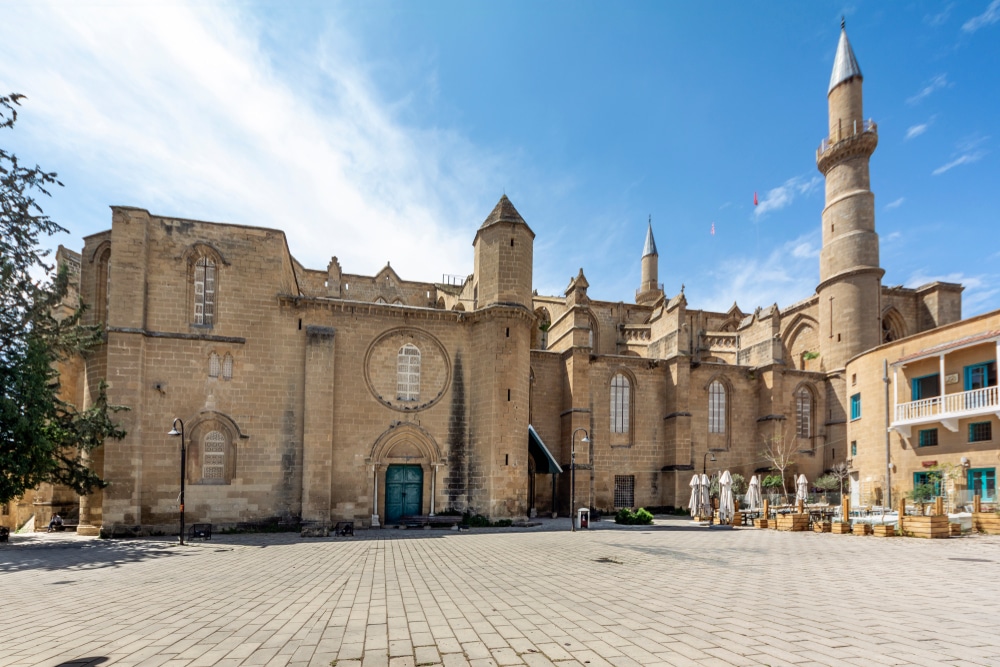 Source: Cem OZER / shutterstock
Source: Cem OZER / shutterstockIf there’s a monument that encapsulates the story of the island and city, it may be the Selimiye Mosque in North Nicosia.
One look will tell you that this used to be a church of serious dimensions.
The shell of the mosque is the former Roman Catholic Cathedral of Saint Sophia, built in the 13th century in an intricate Gothic style.
This was raised on the site of an earlier Byzantine church and was converted into a mosque in 1570 after the Ottomans took the city.
Up to the end of the 15th century the Lusignan Kings of Cyprus were crowned in this very building.
What you see now is a strange but spectacular hybrid, with a pair of minarets growing from an otherwise Gothic monument with splendid window tracery, flying buttresses and much of its delicate stonework intact.
2. Büyük Han
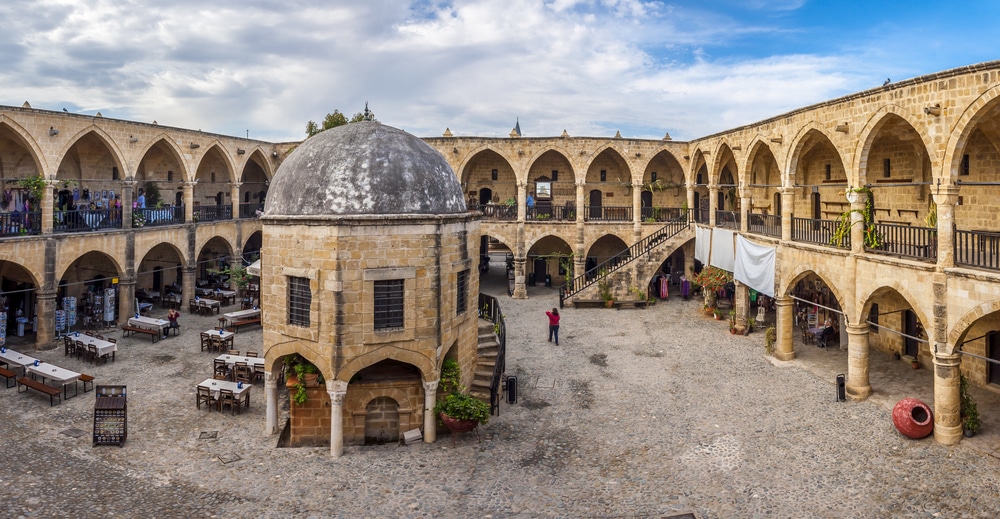 Source: Nejdet Duzen / shutterstock
Source: Nejdet Duzen / shutterstockShortly after the Ottomans took over Cyprus this sweeping caravanserai cropped up close to the Selimiye Mosque at the core of what is now North Nicosia.
Büyük Han (1572) is a majestic version of the merchants’ inns typical of Muslim settlements in the Eastern Mediterranean.
The complex is two tiers of arcades roughly on a square plan (50.67m x 45.25m), all enclosing a courtyard with a mosque and ablution fountain at the centre.
Behind the arches are 68 rooms on both levels, with the lower floor used for trade and storing goods, and the upper floor providing accommodation for merchants.
It’s a dramatic and well-preserved piece of Ottoman heritage that has had a history as chequered as the city.
Between 1892 and 1903, during the British period, this became a prison, and for about 15 years after WWII it provided lodging for the city’s poorest families.
3. Cyprus Museum
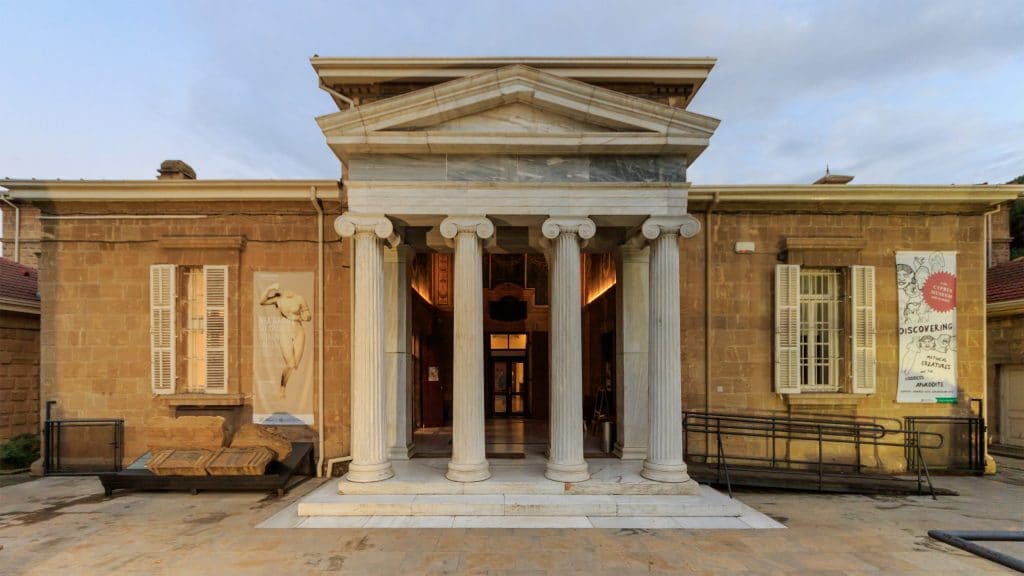 Source: A.Savin (Wikimedia Commons · WikiPhotoSpace) / Wikimedia | CC0
Source: A.Savin (Wikimedia Commons · WikiPhotoSpace) / Wikimedia | CC0The largest and oldest archaeological museum in Cyprus shows off the heritage bestowed by a long line of ancient civilisations.
Established in 1882, the Cyprus Museum looks after the largest collection of Cypriot artefacts in the world, displayed in a series of connected buildings around a square.
If you set aside a few hours you’ll have no fewer than 14 galleries to work your way through.
These are in chronological order, beginning with stone vessels and early clay devotional objects from the Neolithic period.
You’ll see classical statues infused with Egyptian and Assyrian influences, a trove of ceramics from the Middle Bronze Age to the Roman period and treasures from the royal tombs of ancient Salamis.
Be sure to study the compelling series of stone and clay tablets demonstrating the evolution of writing on the island over thousands of years.
4. Ledra Street Crossing Point
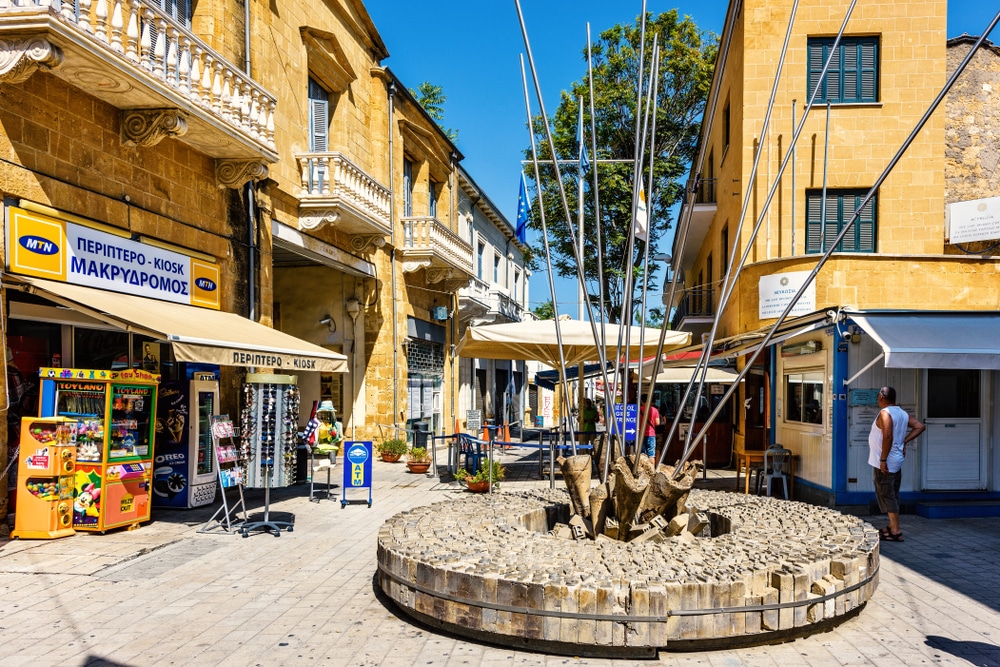 Source: FrimuFilms / shutterstock
Source: FrimuFilms / shutterstockThere’s a total of seven border crossings between the Republic of Cyprus and Northern Cyprus.
Nicosia’s main pedestrian artery became the fifth in 2008 when a long-standing and symbolic barricade was finally lifted.
This had stood since the Turkish Army’s invasion in 1974 and marked the conclusion of years of negotiations.
So Ledra Street has the dual appeal of being a pulsating hub of daily life, full of cafes, restaurants and boutiques, but also a dose of modern history in the border crossing and the UN Buffer Zone that was established in 1974. The border is normally open 24 hours a day, and part of the appeal of crossing the Green Line is contrasting the south with the north and its many bazaars.
Just don’t forget your passport.
5. Venetian Walls of Nicosia
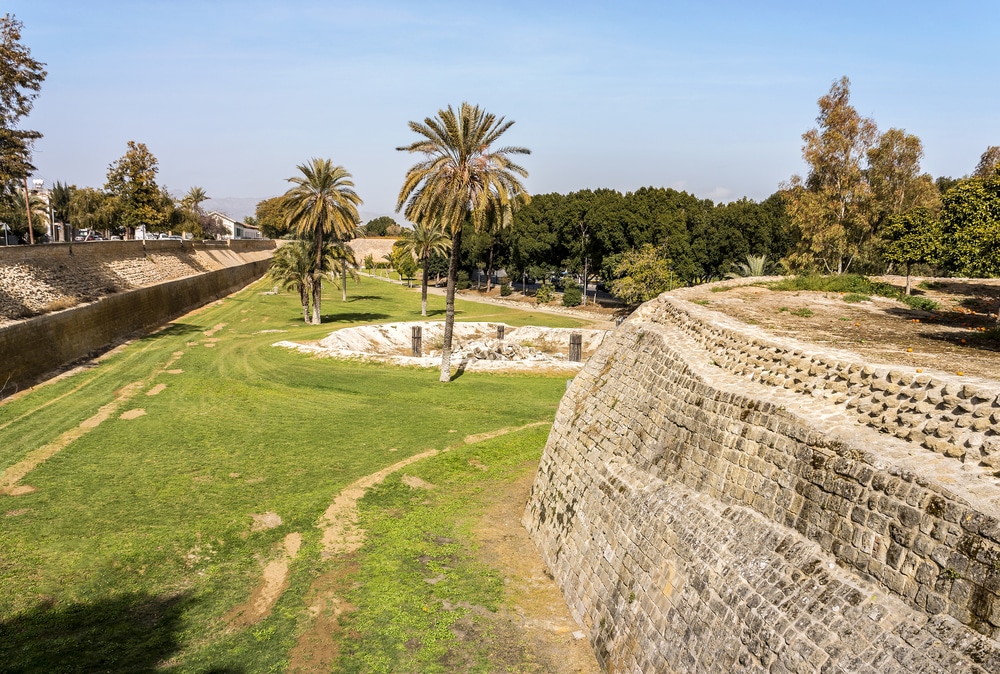 Source: airphoto.gr / shutterstock
Source: airphoto.gr / shutterstockThe Venetians only controlled Nicosia from 1489 to 1570 but left behind a system of artillery defences still in good condition to this day.
Work started as late as the 1560s, when the Medieval Lusignan walls were overhauled to meet the growing threat of an Ottoman invasion.
The military engineers Giulio Savorgnan and Francesco Barbaro led the design, and their project required a lot of the city, from churches to palaces, to be demolished.
This applied to any building beyond the walls.
The surviving moat (80 metres wide), gates, pentagonal, bastions and ramparts constitute the best-preserved Renaissance fortifications in the Eastern Mediterranean.
The defences were never completed before the outbreak of the Fourth Ottoman-Venetian War in 1570. And yet this system has a circumference of five kilometres and features three gates and 11 bastions, each named for a prominent Italian family in the city at the time.
6. Bedesten
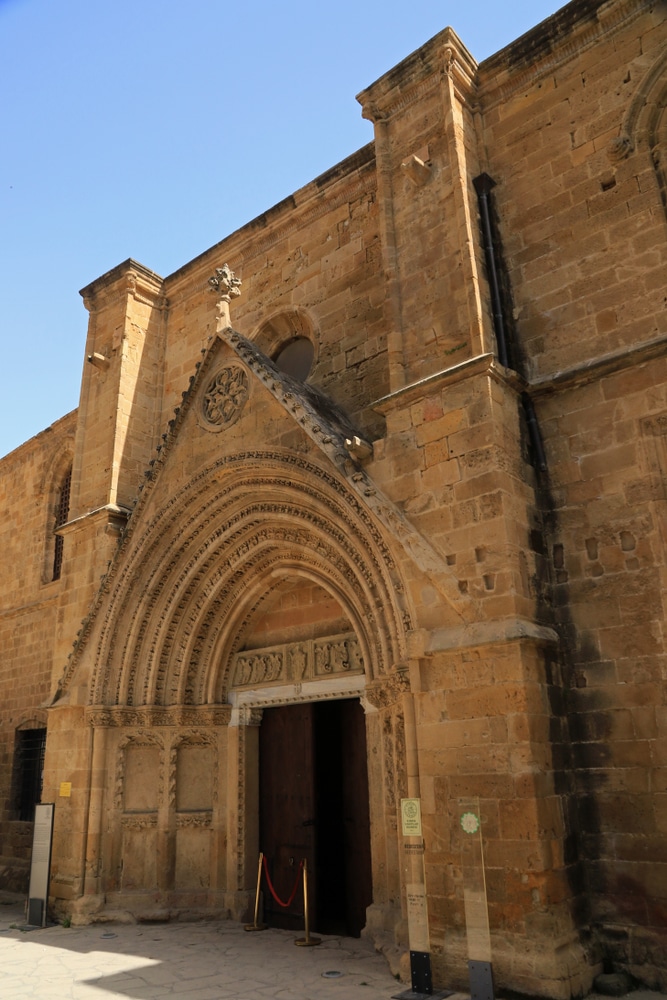 Source: bayazed / shutterstock
Source: bayazed / shutterstockThe term “Bedesten” is Ottoman, and describes a covered textile market.
This structure next to the Selimiye Mosque was used as a market from the 16th to the 19th century, but resembles no other Bedesten in the former Ottoman Empire.
That’s because, as the portals will tell you, it was a church until the 16th century, and dedicated to St Nicholas.
The earliest Byzantine building went up in the 6th century and was enlarged in a Gothic style by the Lusignans, while the Venetians added Renaissance elements.
After the 19th century the building fell into disrepair, to the point that only the entrance and the vaulting of the church’s original nave and aisles remained.
The Bedesten was restored in the 2000s and turned into a cultural centre, with a new wooden roof on the building’s western portion.
7. St John’s Cathedral
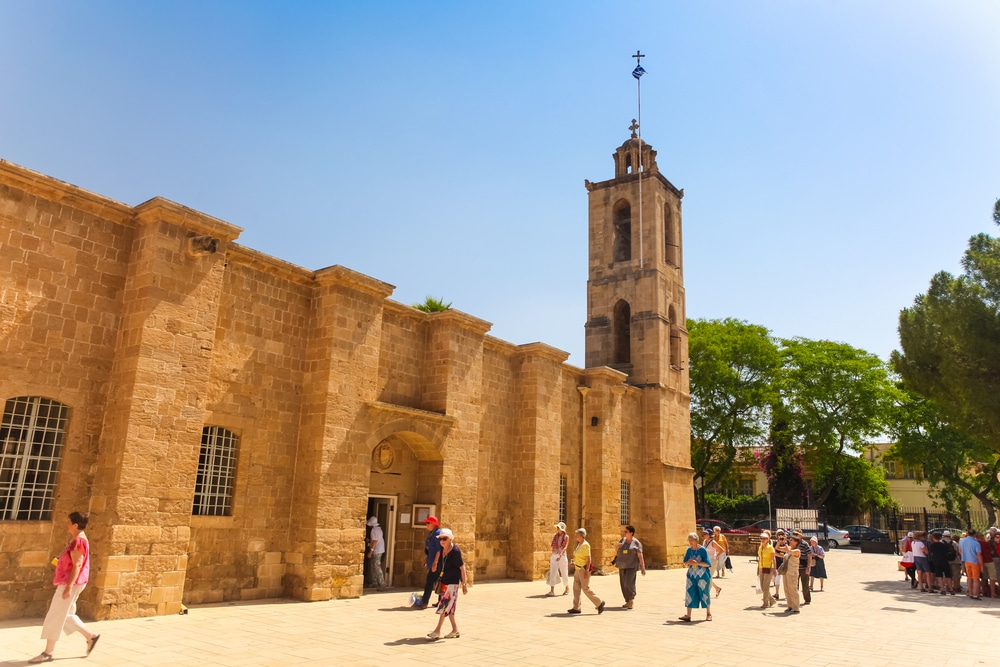 Source: Zakhar Mar / shutterstock
Source: Zakhar Mar / shutterstockThe seat of the Church of Cyprus is a rather humble-looking church constructed within the walls in the 17th century.
It stands on the foundations of a monastery, also dedicated to St John the Apostle and was first mentioned in 1345. The exterior has rows of supports and is unadorned because of the rules imposed under Ottoman rule when it was constructed in the 1660s.
The interior is much richer and furnished with 18th-century gilded wood panelling and crystal chandeliers.
This is the only church in Cyprus to have held onto all of its original frescoes, painted in the 18th century and depicting scenes from the bible and the discovery of the Tomb of St Barnabas close to Salamis.
Also make time for the icons from 1795 and 1797 by the feted Cretan painter Ioannis Kornaros (1745-1821).
8. Cyprus Folk Art Museum (Ethnographic Museum)
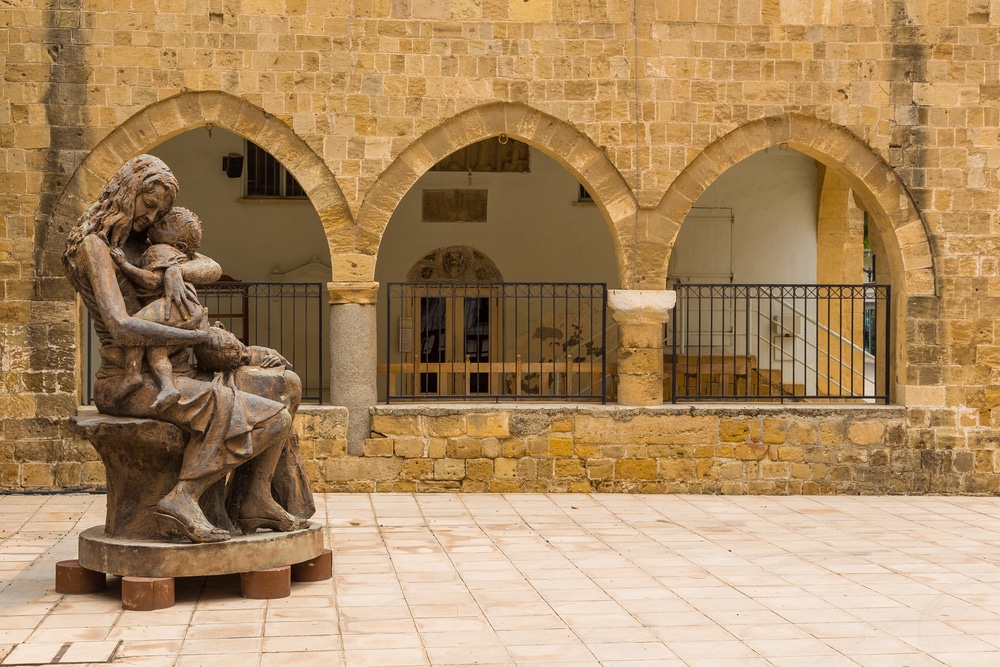 Source: Tomasz Wozniak / shutterstock
Source: Tomasz Wozniak / shutterstockFounded back in 1937 this museum is housed in the old episcopal palace, which grew over the centuries and features a whole melange of architecture from Medieval times up to the 18th century.
Archbishop Kyprianos of Cyprus, the man for whom the square in front is named, was forcibly removed from this building and then publicly hanged in the square by the Ottomans in 1821 for his support for the Greek Revolution.
Now, the museum is a survey of Cypriot folk art from the 19th and 20th centuries, collected from villages across the countryside.
There are 5,000 items in the catalogue, highlighting skills and knowhow in basketry, lace, leatherwork, basketry, woodcarving, pottery, costume, weaving and Naïve painting.
You can also peruse a wealth of historic agricultural and weaving tools.
One standout piece is the carved door of the Church of St Mammas from the town of Morphou, which inspired the poem “Little Things of Cyprus” by Giorgos Seferis (1900-1971).
9. Byzantine Museum
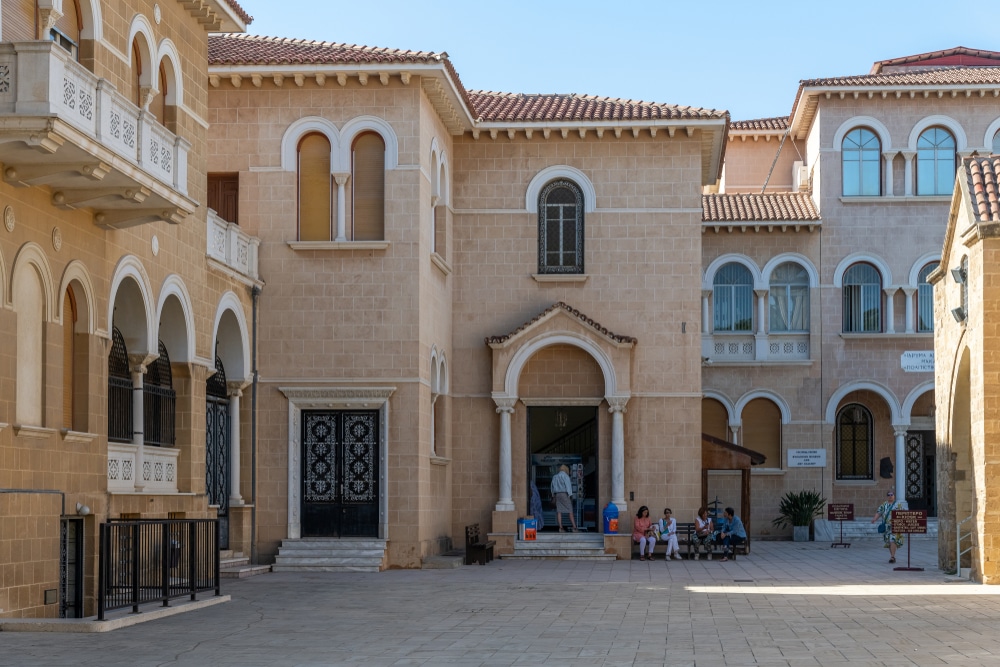 Source: BestPhotoPlus / shutterstock
Source: BestPhotoPlus / shutterstockIn one of the buildings of the current Archbishopric by St John’s Cathedral is a museum with the most important collection of Byzantine art on the island.
These exhibits span more than 1,000 years between the 6th and 19th centuries.
At the heart of the collection are more than 230 icons painted between the 800s and 1800s, coming from churches all over the island.
These are complemented by vestments, books and fine sacred vessels such as chalices and thuribles.
Especially compelling are the pieces of wall art that have been installed at the museum.
These include seven fragments of apse mosaics produced in the 6th century for Panagia Kanakaria in Lythrankom, and 36 pieces from a 15th-century fresco for the Church of Christ Antiphonitis in Kalogrea.
10. Leventis Art Gallery
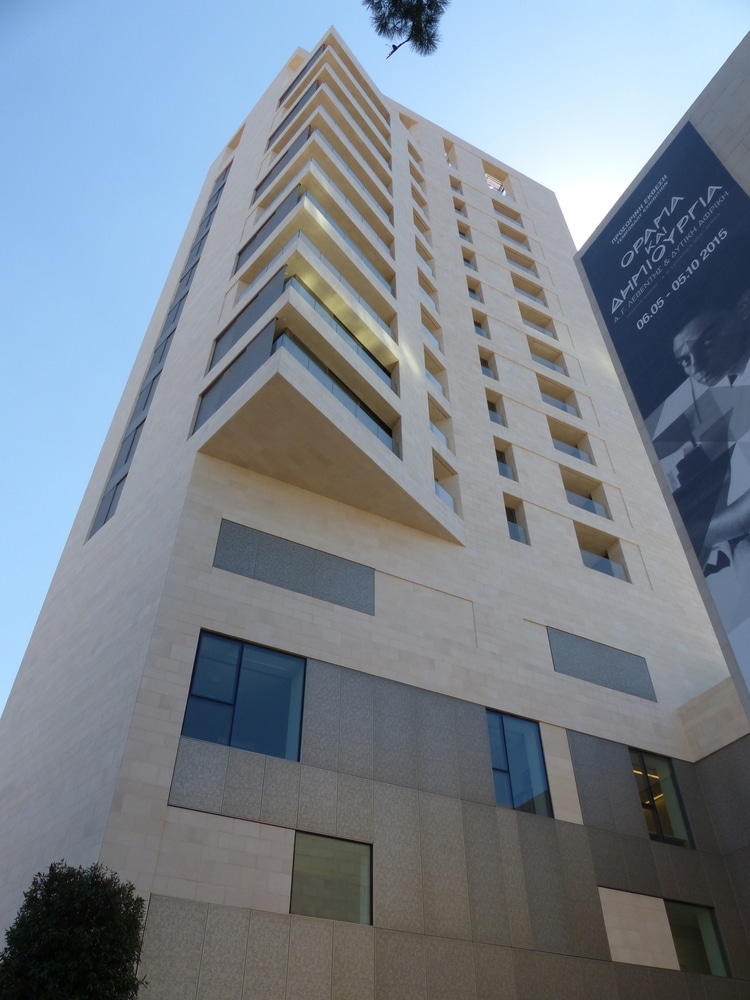 Source: lensfield / shutterstock
Source: lensfield / shutterstockA recent addition to the Nicosia skyline, this gallery and its high-rise tower were designed by Feilden Clegg Bradley Studios, after winning an international design competition.
The Leventis Gallery opened to the public in 2014 and is named for businessman and philanthropist Anastasios George Leventis (1902-1978), displaying art belong to the foundation in his name.
The museum holds important collections for 20th-century Greek art and Cypriot art from the 19th and 20th centuries, exemplified by the self-taught George Polyviou Georghiou (1901-1972). What draws the most attention though is the Paris Collection and its European art from the 1600s to the 1900s, by the likes of Renoir, Fragonard, Signac, Canaletto, Chagall and Corot.
These rich holdings are combined with up to five big temporary exhibitions each year.
Website: https://www.leventisgallery.org/
11. Leventis Municipal Museum of Nicosia
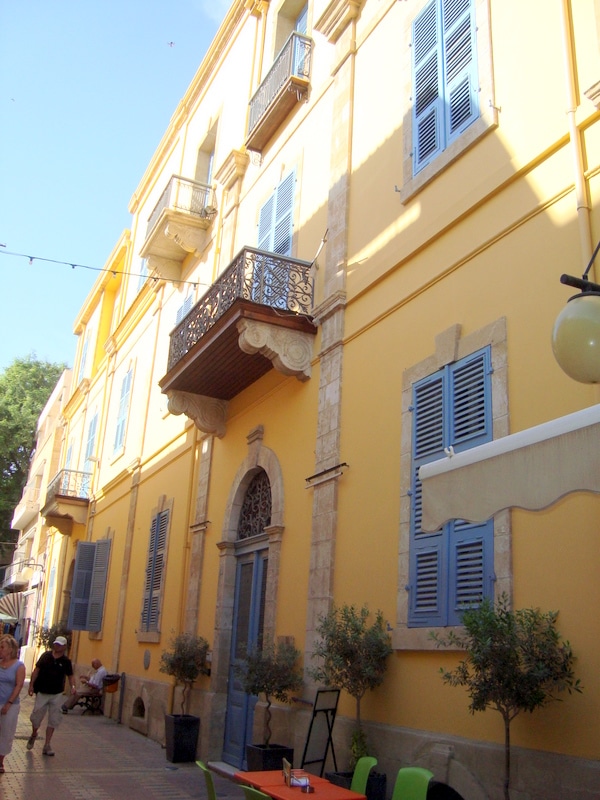 Source: Andreas2009 / Wikimedia | CC0
Source: Andreas2009 / Wikimedia | CC0The A. G. Leventis Foundation is also responsible for this attraction documenting the history of Nicosia across more than 5,000 years.
Neatly presented and full of interesting archaeological finds, the Municipal Museum is in a complex of restored traditional buildings on Hippocrates Street and has gathered its sizeable collections in the years since it was founded in 1984. There’s a lot to investigate inside, in galleries for the ancient city-state of Ledra, Byzantine and Medieval Nicosia, the Venetian period, Ottoman times, the British period and the modern city.
In the permanent exhibition you can admire ancient statuary, an Archaic wine vessel dating back 2,700 years, glazed Medieval ceramics, a Renaissance tapestry and a vibrant display of traditional costume.
Website: http://leventismuseum.org.cy/
12. Famagusta Gate
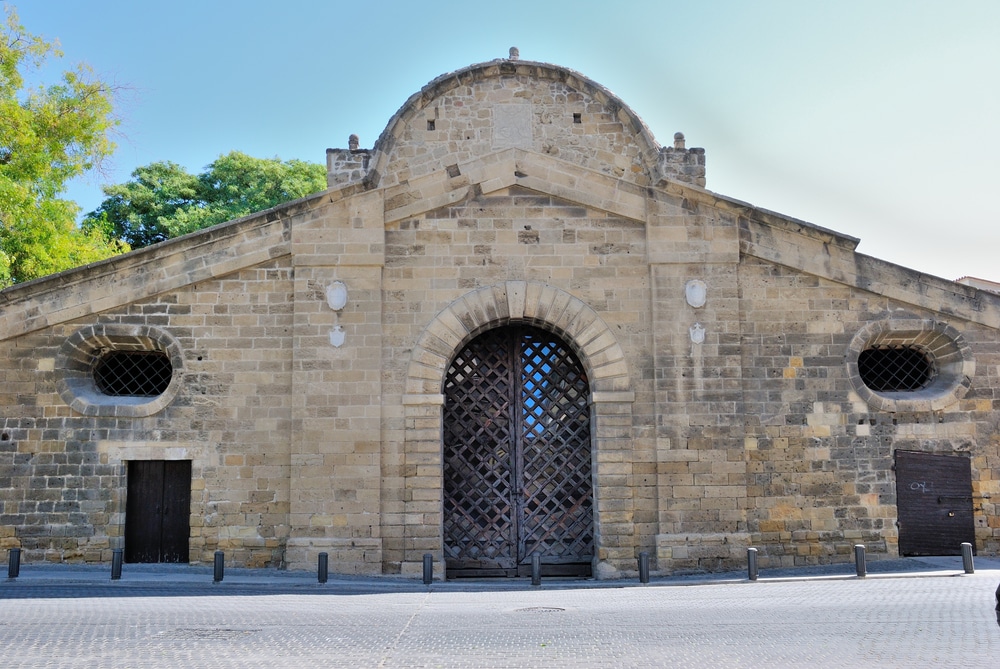 Source: Nina Alizada / shutterstock
Source: Nina Alizada / shutterstockAn imposing vestige of the Venetian defences has become a venue for events and exhibitions.
Famagusta Gate was completed in 1567, shortly before Nicosia was taken by the Ottomans.
The design is thought to have been borrowed from the gates of Candia on Crete, and consists of a long barrel-vaulted passage, wide enough for two vehicles to pass through.
The portal is capped with a circular pediment, and there’s a large, Pantheon-like dome more than ten metres in diameter to illuminate the interior.
On either side of the main passageway are chambers for the guards.
The gate was revamped by the Ottomans in 1821 in response to the Greek Revolution, and has served as a cultural centre since its most recent renovation in 1981.
13. Girne Kapisi (Kyrenia Gate)
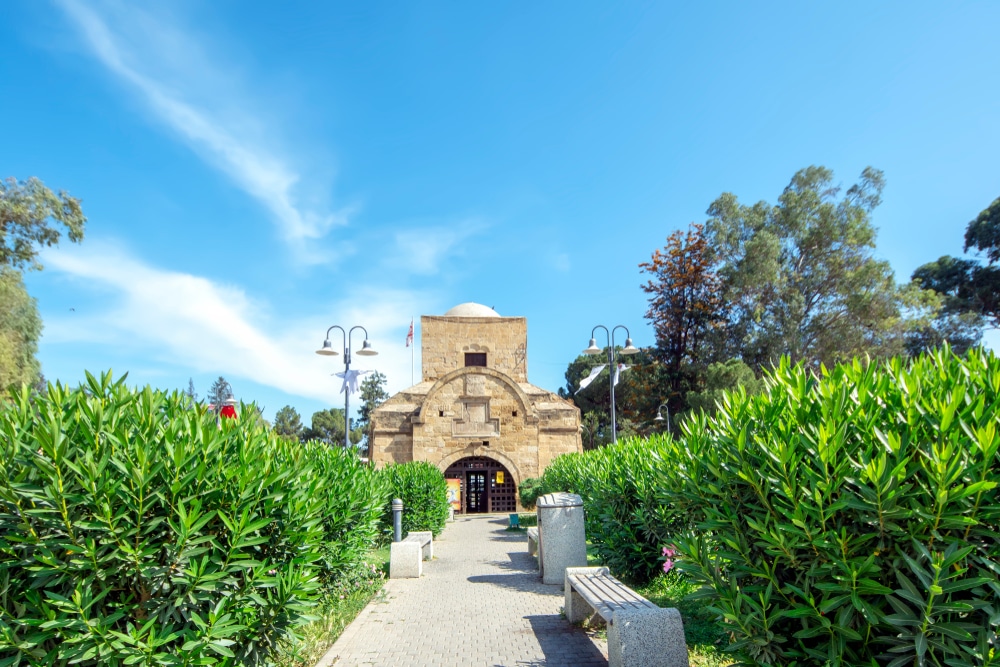 Source: Cem OZER / shutterstock
Source: Cem OZER / shutterstockWandering through North Nicosia, take time to seek out this gate by the northern apex of the fortifications.
The design is almost identical to its counterpart on the east side, and like the Famagusta Gate this was reinforced in 1821. Something interesting to look out for is the tablet over the portal, bearing MDLXII (1562) signifying the beginning of construction.
In the brickwork on either side you can also discern “GVRI” and “1931”, for British King George V, and the date when the walls on either side were torn down to improve traffic flow.
Yet another inscription from 1821 sports the tughra (monogram) of Ottoman Sultan Mahmud II (1785-1839). The side rooms for Girne Kapisi today contain the tourist information office for North Nicosia.
14. Shacolas Tower Museum and Observatory
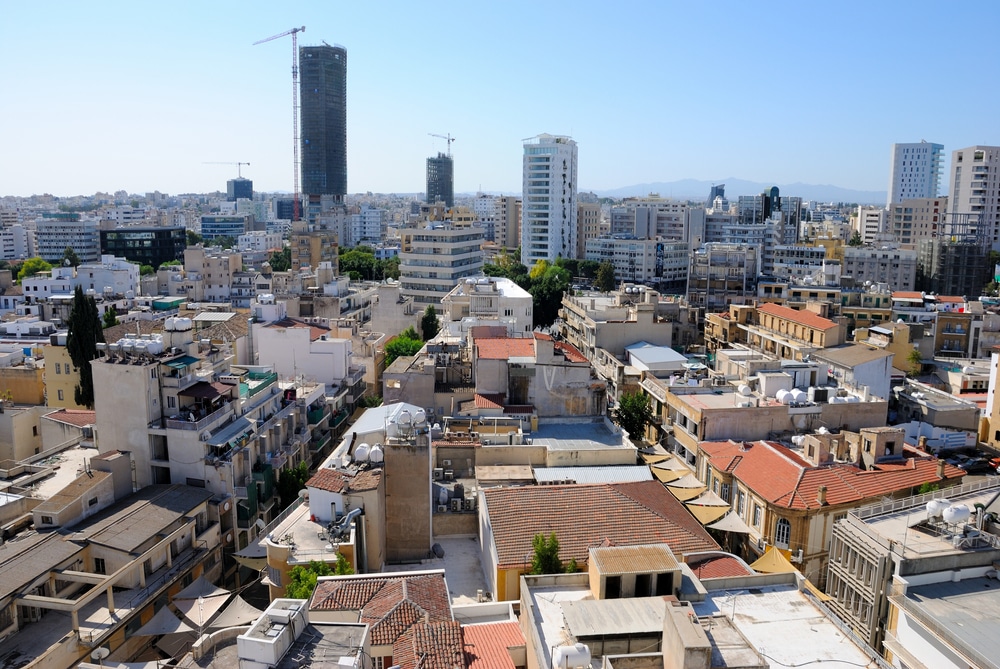 Source: Nina Alizada / shutterstock
Source: Nina Alizada / shutterstockRight on Ledras Street in the middle of the old town’s shopping quarter is a high-rise tower constructed in the late-1950s.
At 50 metres the Shacolas Tower is in the top ten tallest buildings in the city, but would otherwise be unremarkable aside from a branch of H&M on its lower floors.
But if you go up to the observatory on the top floor you’ll be wowed by unobstructed views of Nicosia, over the border and out to the Kyrenia Mountains behind.
There’s a museum up here presenting photographs and footage from old Nicosia, and the view is accompanied by telescopes and information panels pointing out all the major landmarks.
15. Faneromeni Square
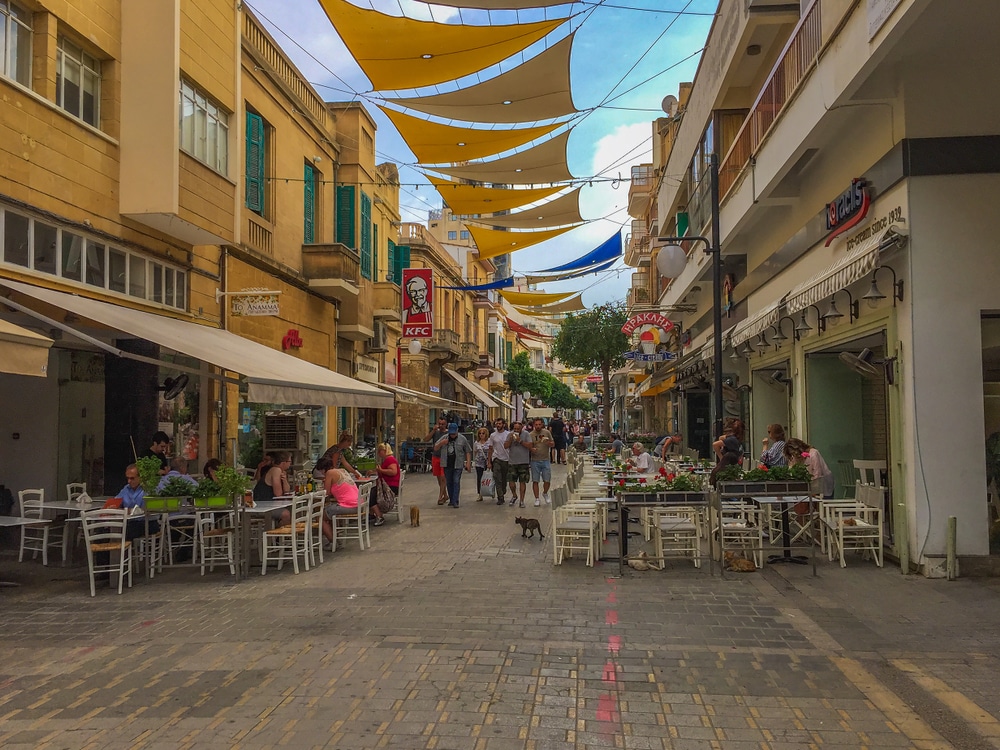 Source: Pit Stock / shutterstock
Source: Pit Stock / shutterstockIt’s not hard to see how this handsome square within the Venetian Walls was Nicosia’s central plaza up to the 1970s.
Enclosed by Neoclassical facades for the Faneromeni School and the Faneromeni Library, this square has long been a haven for artists and musicians, but also a gathering place for political radicals.
This space is dominated by the eponymous church, dating to 1872 and constructed on what had been an Orthodox nunnery.
Just past the apse, in front of the Faneromeni School (est. 1857), you’ll see a marble monument erected in memory of four clerics executed by the Ottoman governor in 1821 for supporting the Greek Revolution.
16. Archangel Michael Trypiotis Church
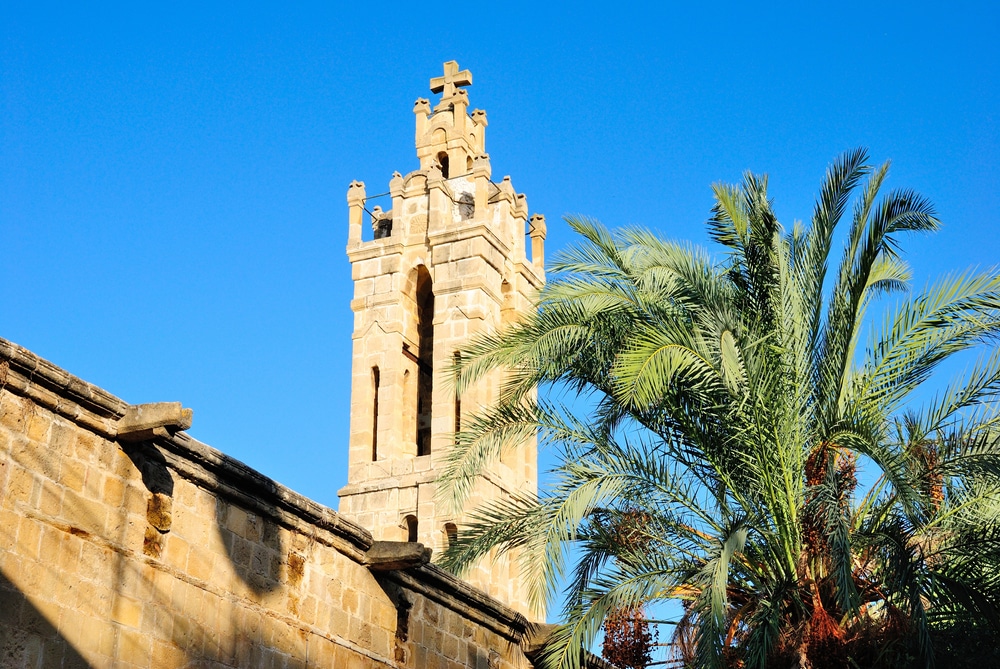 Source: Nina Alizada / shutterstock
Source: Nina Alizada / shutterstockThis beautiful old church within the walls has given its name to the surrounding Trypiotis Quarter.
The current building went up at the end of the 17th century, but is believed to have integrated stonework from a 13th-century Gothic church and monastery on the site.
This three-nave basilica, designed in Franco-Byzantine style and topped by a single dome and a bell tower, has an almost perfect square footprint.
Inside, the three naves are divided by arcades with bulky pillars.
Be sure to check out the church’s prized possession, an iconostasis carved and gilded in the 1810s.
The most valuable icon is on the right end, painted in the 15th century and depicting the Madonna and Child flanked by Joseph and St Anne.
Close by is an image of the Archangel Michael from 1634 in full armour, while on the left side you can spot St Spyridon, painted in 1755 with gospel book in hand.
17. Hadjigeorgakis Kornesios Mansion
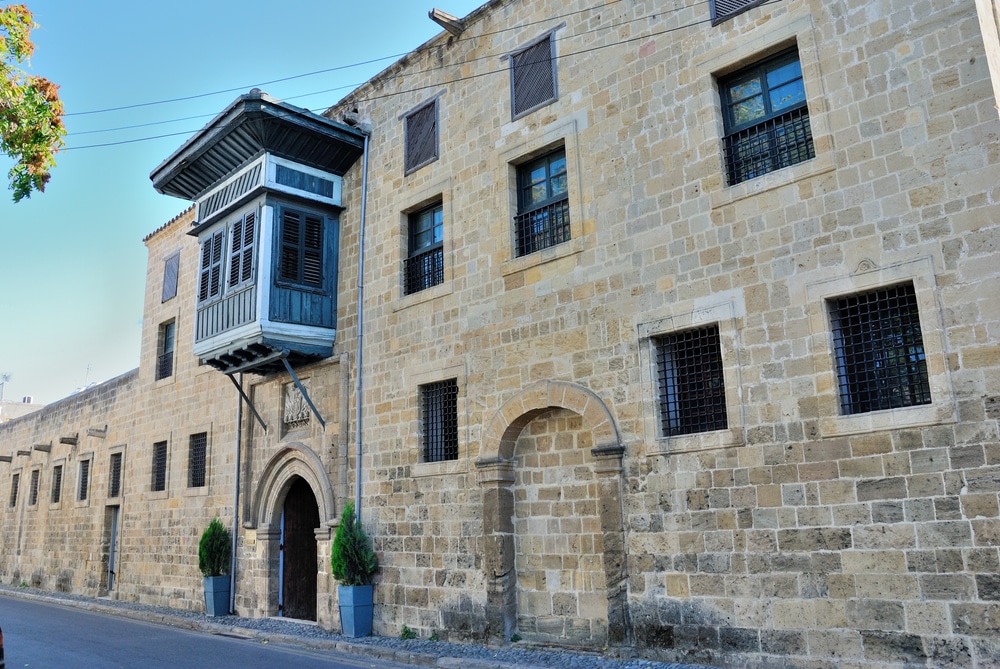 Source: Nina Alizada / shutterstock
Source: Nina Alizada / shutterstockAt the turn of the 19th century, Hadjigeorgakis Kornesios was a dragoman, working as a powerful intermediary between the Ottomans and the Greek Cypriot population.
His home sits close to the Archbishopric in the Saint Antonios neighbourhood, which at that time was home to prominent members of the Greek community.
The house, built around 1793, represents old Nicosia’s most significant piece of architecture from the late Ottoman period and is open today as an ethnographic museum.
On two storeys, the Hadjigeorgakis Kornesios Mansion is built from sandstone and centres on a courtyard with a garden, fountain and hammam.
The ground floor was reserved for the kitchen and servants’ quarters, while roofed stone steps lead from the courtyard up to the living areas and a fine reception area, typical for Ottoman homes.
This last space is embellished with portraits from the period, and boasts an intricately carved and gilded ceiling and decorative panels with floral motifs between the windows.
18. Sarayönü Square
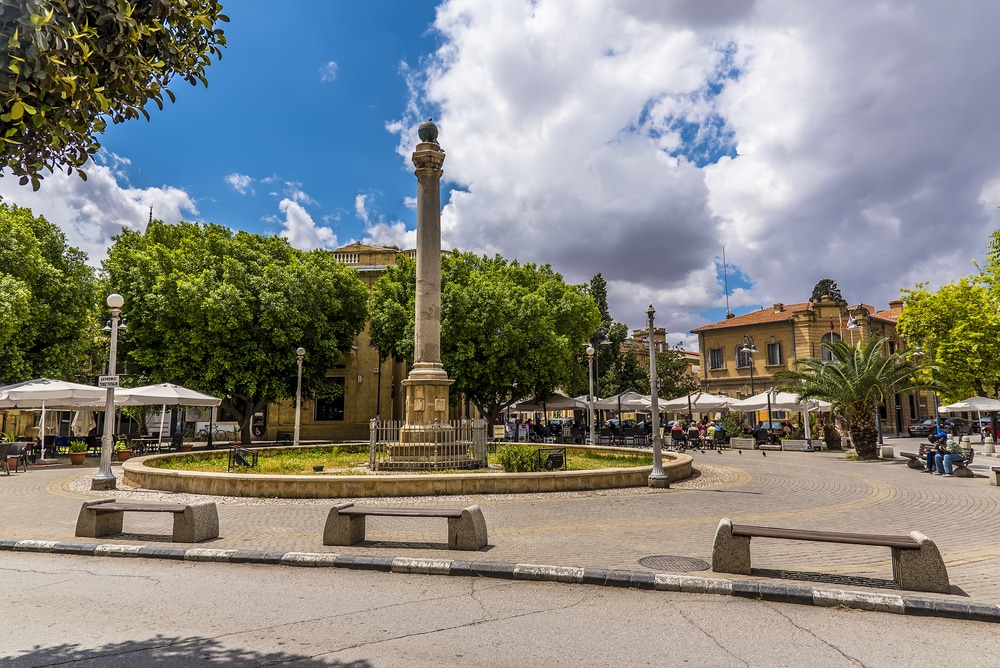 Source: Nicola Pulham / shutterstock
Source: Nicola Pulham / shutterstockOfficially known as Atatürk Square, this plaza is at the nucleus of North Nicosia and was the island’s seat of power for hundreds of years.
Had you visited this place before the 20th century you would have been met by the sumptuous Ottoman governor’s mansion, mixing Medieval Lusignan and Venetian elements but demolished by the British in 1904. There is a holdover from Venetian times in the column once crested by a Lion of St Mark that was toppled when the Turks took over in 1570. The column itself is much older and was brought here by the Venetians from the ancient ruins of Salamis.
The square’s fountain, in front of the Law Courts, has Ottoman origins and goes back at least as far as the 18th century.
The Sarayönü Mosque meanwhile was initially adapted from a Gothic Carmelite Church, but, except for its Ottoman minaret, was rebuilt in a Moorish style following an earthquake in 1900.
19. Ömeriye Mosque
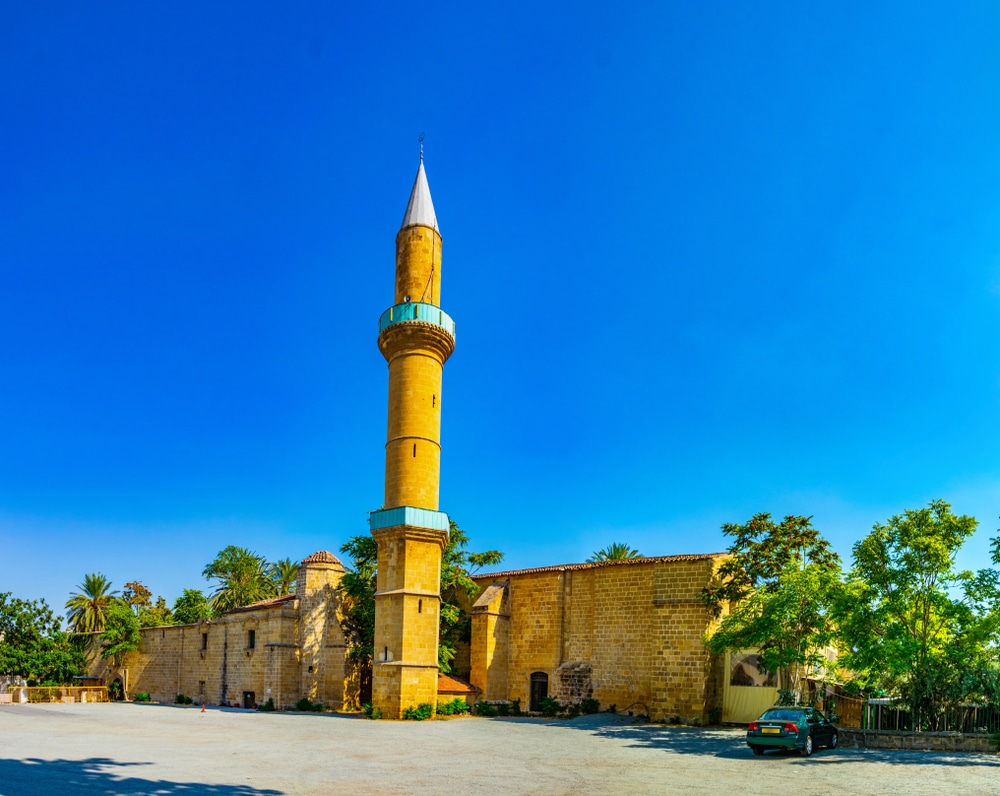 Source: trabantos / shutterstock
Source: trabantos / shutterstockThe main place of worship for Muslims in the south section of Nicosia is just next to the Archbishopric.
Before the Ottoman invasion in 1570 there was an Augustinian Church for St Mary on this spot and erected in the 14th century.
Not much survives of that monument, and there’s a reason why this mosque was raised in its place directly after their conquest.
It was thought that the church marked the 7th-century burial site of Umar, the fabled 2nd Caliph of the Rashidun Caliphate.
The Ömeriye Mosque has a similar footprint to the former church, and bears most of the hallmarks of Ottoman religious architecture from this period, all in the shadow of a minaret visible for some distance.
On the north-east side the wall is a remnant of the monastery once attached to the church, easily identified by its pointed Gothic portal and Renaissance-style pedimented windows.
20. Cyprus Classic Motorcycle Museum
This private museum is a labour of love for one Andreas Nicolaou who spent more than 40 years acquiring classic motorcycles for his ever-expanding collection.
This spectacular line-up has recently passed the 400-mark, with bikes dating from between 1914 and 1983. Pretty much all of the big international marques are included, from Ducati to Triumph, Norton, Indian, Harley Davidson, MV Agusta and Honda, as well as plenty of obscure and now obsolete British brands like AJS and New Hudson.
Best of all, Andreas is a bit of a raconteur and happy to share his passion for his collection, giving you a little background on each vehicle.
Website: https://cyclassicmotormuseum.wixsite.com/cyclassicmotormuseum
21. Fairytale Museum
Housed in a heritage-listed mansion in the old town, this museum opens a window on myths, popular traditions, legends and fairytales, both from Cyprus and around the world.
At this constantly changing experiential attraction you can dive into whimsical narrative displays and thematic exhibitions, all steeped in oral traditions.
There’s usually a daily guided tour, and the Fairytale Museum stands out for the care and skill put into its mesmerising displays.
Smaller children will have a great time discovering the trail’s hidden passages and secret compartments, and will get the chance to make up their own stories.
22. Liberty Monument
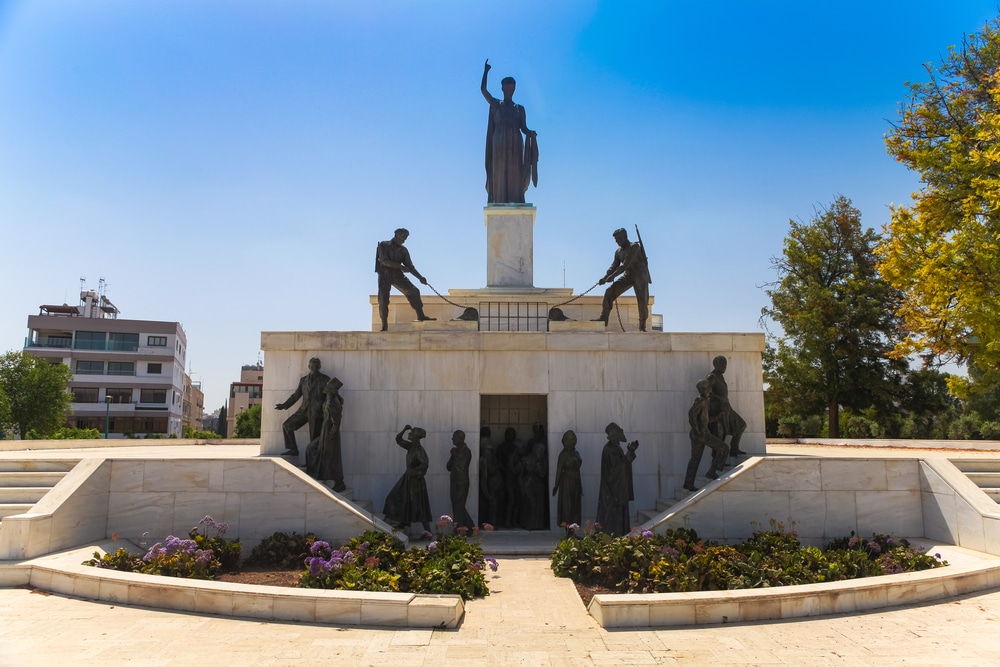 Source: Zakhar Mar / shutterstock
Source: Zakhar Mar / shutterstockAt the Podocattaro Bastion on the Venetian Walls is an impressive and perhaps somewhat controversial piece of 20th-century nationalist imagery.
Inaugurated in 1973, the Liberty Monument celebrates the EOKA nationalist guerrillas who fought against British rule during the Cyprus Emergency of 1955-59. The monument consists of a group of statues on and in a chamber, with an allegorical image of Liberty cresting the ensemble on a plinth.
You can make out EOKA fighters pulling chains to lift a prison gate, symbolising the liberation of Greek Cypriots, represented by clergy and peasants, from British Rule.
23. Nicosia Aqueduct
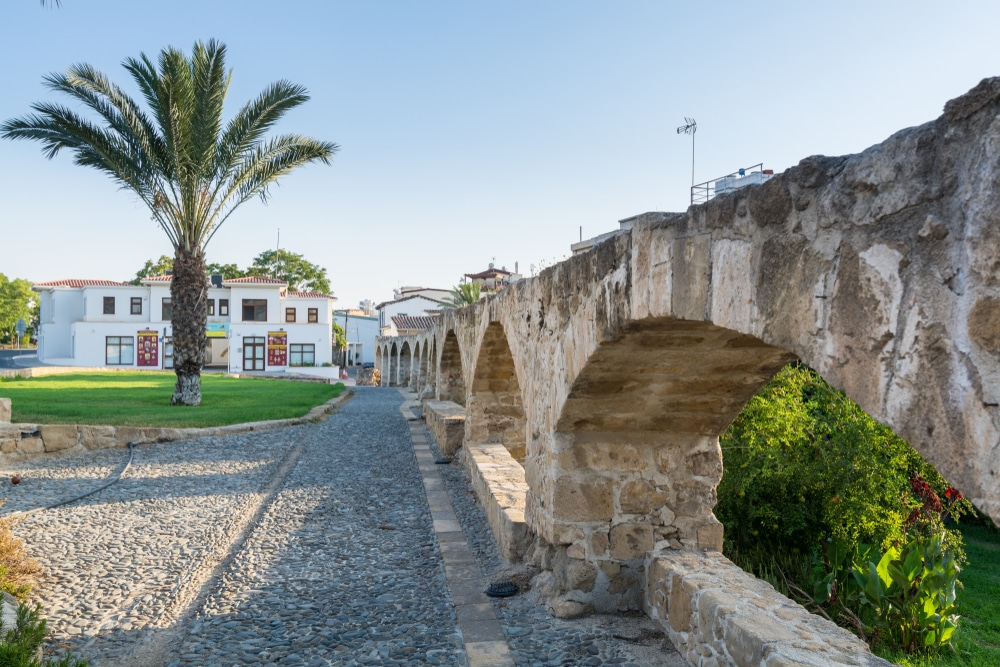 Source: Victor Jiang / shutterstock
Source: Victor Jiang / shutterstockIn full sight of the Liberty Monument is a small but intriguing scrap of infrastructure from bygone time.
A series of arches facing the park is what remains of Nicosia’s 18th-century water supply system.
This portion of the aqueduct once extended from Kyrenia Gate in the north to Famagusta Gate in the east, delivering water that had been channelled down from the Kyrenia Mountains to fountains in the city’s inner quarters.
The whole project was named after Silihitar, the Ottoman governor at the time, and would have been completely lost to history had this section of the aqueduct not been revealed during the demolition of a private building.
24. Athalassa National Forest Park
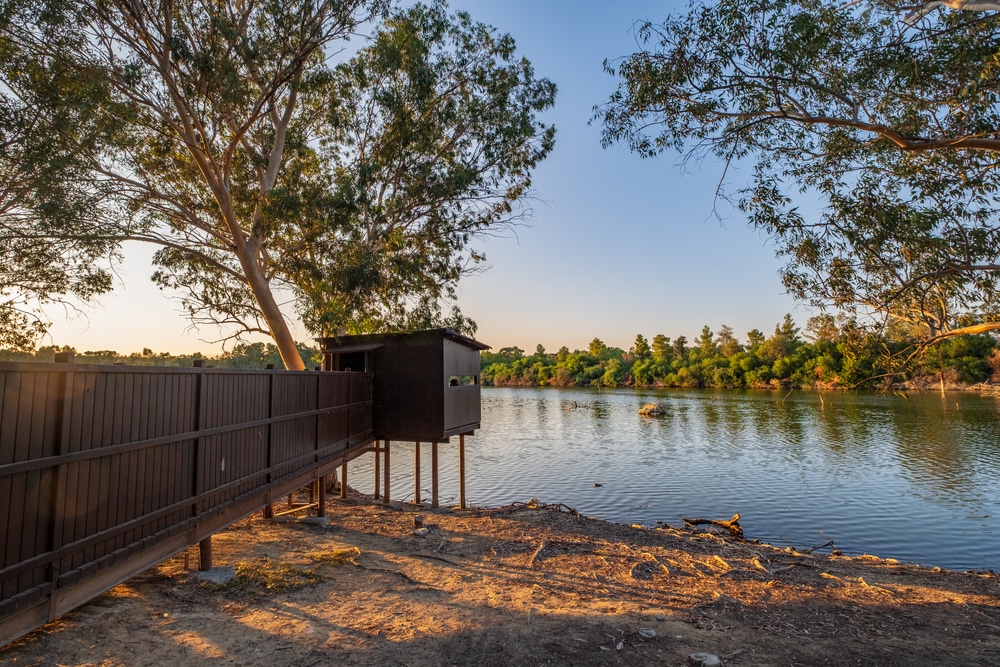 Source: Iordanis / shutterstock
Source: Iordanis / shutterstockYou won’t have to travel far from Nicosia for fresh air and greenery as this 840-hectare reserve sits right on the south-eastern edge of the city.
And being just a few minutes from the heart of the capital, Athalassa National Forest Park is a go-to for strolls, dog walks, picnics, jogging and cycling.
There are more than 20 kilometres of trails here, ushering you through a landscape of mostly endemic trees and shrubs.
On the east side, the park’s lake is a lovely green oasis and a magnet for water birds.
If you’d like to know more about the local ecology you’ll find informative exhibits at the visitor centre, which has a scale model of the park, as well as fossils and geological specimens.
25. Machairas Monastery
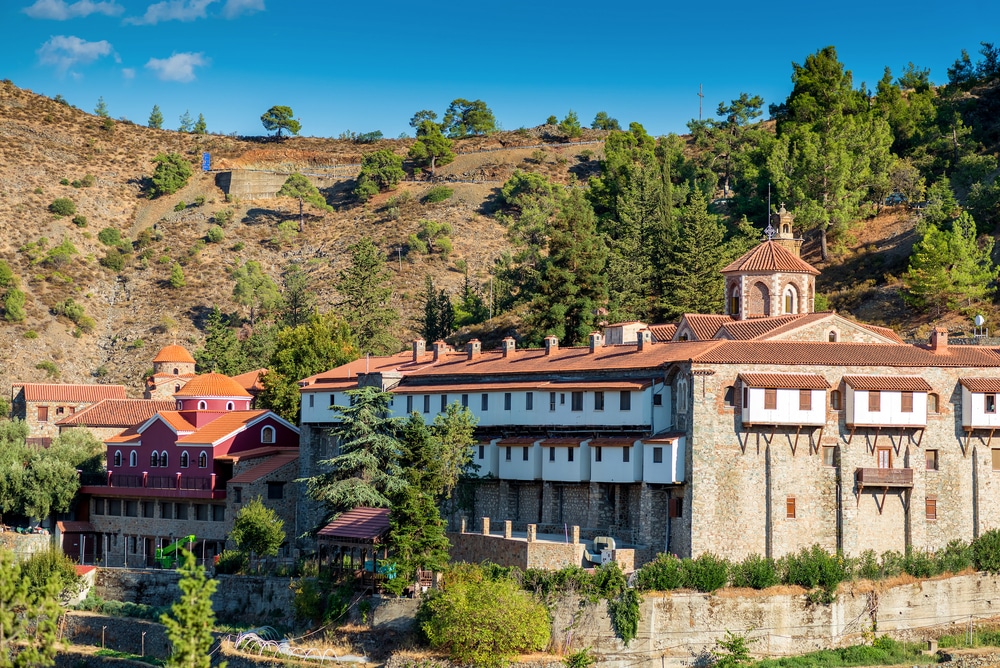 Source: kirill_makarov / shutterstock
Source: kirill_makarov / shutterstockForty kilometres away in the Troodos Mountains, the Maicharas Monastery supports a community of some 30 Orthodox monks, and has a glorious location atop terraced orchards over a steep valley.
It’s one of three Royal and Stavropegic Monasteries in Cyprus, founded in the middle of the 12th century and housing an icon of the Virgin Mary ascribed with miraculous properties and supposedly painted by Luke the Evangelist.
The story goes that a hermit smuggled this icon onto the island at a time of iconoclasm in the 8th and 9th centuries, hiding it in a cave on Kionia Mountain.
There it remained until two hermits, Ignatius and Neophytos were guided here from Palestine to discover the icon in 1145. To reach the cave, the hermits had to hack their way through the vegetation with knives, and the monastery’s name derives from the Greek word, “makhaira”, for bladed weapon.
Naturally, this icon is the centre of attention at the sublime monastic church, decorated with chandeliers and enchanting frescoes.